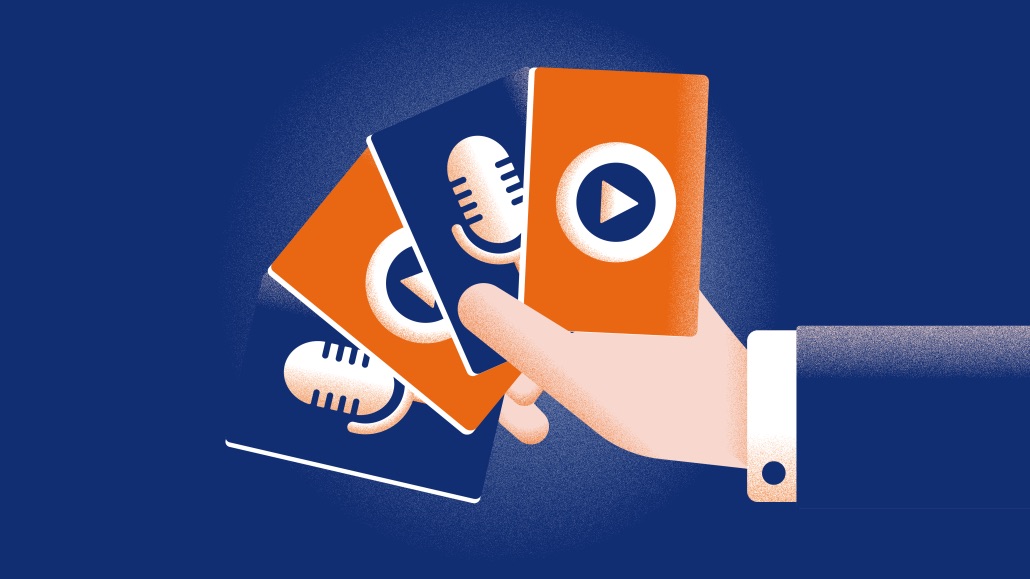Marketers are driving ad effectiveness and engagement with digital audio

Ann Piper, head of client partnerships, vertical team, Spotify Advertising
As an increasing number of people engage with digital audio, marketers are keen to understand what keeps listeners engaged — and how they can tap into their attention.
Recent reports anticipate the global digital audio advertising market will top $8.9 billion this year. In 2022, a whopping two-thirds of the U.S. population (about 222 million people, or 74% of U.S. internet users) listened to digital audio. Knowing how listeners process this type of content helps advertisers create more immersive, memorable and emotional messages.
That’s the motivation behind Sonic Science, a Spotify Advertising research franchise, first released in 2021 and conducted by Neuro Insight. Those early findings revealed that genres of music, tempo and lyrics impact listeners in different ways, affecting their subconscious to make them feel happy, sad or chill — and sound influences not only emotion but also memory and engagement centers.
In 2022, Spotify’s Sonic Science Volume 2 study, conducted in collaboration with psychophysiological measurement company MindProber, measured heart rate and electrodermal activity so that researchers could gauge listeners’ emotional arousal and attention levels, engagement and more. The research showed how humans consume audio in daily life — and how that translates into positive brand outcomes.
Both reports are still providing utility in 2023, as understanding how music and podcasts serve as a backdrop for engaging and memorable ads helps today’s brands better connect with their customers.
Listening makes consumers happy, creating a halo effect for the ad experience
Most study participants reported a mood boost after tuning into digital audio, and those positive feelings lasted well beyond the listening session. In fact, 66% of global millennials and Gen Zs view audio as a mental health resource, leaning on it to boost their mood, according to Spotify’s Culture Next 2021 research.
By looking at acoustic attributes of different tracks — from danceability to “instrumentalness” (absence of vocals) and “speechiness” (presence of vocals) — the research also revealed that the music that listeners choose is highly specific to the activity they’re doing.
Regardless of whether it’s music or podcasts, listeners recall brands very effectively. Even when an ad was heard while driving, shopping or cooking, the Spotify x Mind Prober Sonic Science Volume 2, 2023 report found that recall was five times greater than expected when compared to a model based on chance.
Sound impacts consumers through key parts of the brain, driving ad effectiveness
Digital audio provides optimum access to an attentive audience throughout the day. And because it affects so many areas of the brain, digital audio has a powerful impact on ad performance.
According to the Spotify x Neuro-Insight Sonic Science Volume 1, 2022 report, 93% of the brain’s engagement with content on Spotify transfers directly into ad engagement, generating 19% higher brand breakthrough than all other media, including video and social media. Compared to other forms of media, listening to music on Spotify boosts engagement (33%), emotional intensity (9%) and detail memory (32%).
Impactful audio plays a crucial role in listener ad engagement
From walking and reading to cooking and sleeping, 63% of participants in the 2023 Spotify x Mind Prober Sonic Science Volume 2 study confirmed that digital audio is essential to their daily routines. Streaming audio on Spotify also allows listeners to tune in during those “screenless moments” when they’re hard to reach via visual mediums — but when they’re potentially most engaged and interacting with the app. This allows brands to take center stage.
2023’s Sonic Science Volume 2 also revealed that mirroring various aspects of music can trigger the best possible consumer responses and create a powerful environment for reaching audiences primed to remember the brand’s message. Case in point: 75% of listeners who turn to digital audio while doing things like walking or working said they are open to hearing ads as long as the tone fits the activity.
With both music and podcasts, 60% of listeners’ ad engagement carries over from the audio content heard immediately before, according to 2023’s Sonic Science Volume 2 study. This “carryover effect” has significant implications for brands; the more impactful the audio content, the more impactful the ad.
The results are clear: the music and podcasts consumers choose reflect their physical environment and activity at the moment. These insights help advertisers understand how to leverage music and podcasts to drive more memorable advertising, brand breakthrough and in-market results.
Sponsored by: Spotify Advertising
More from Digiday

Future of TV Briefing: How the future of TV shaped up in 2025
This week’s Future of TV Briefing looks back at the top topics and trends that overtook the TV, streaming and digital video industries in 2025.

Lowe’s wants to do more with AI shopping in 2026
Mylow, a shopping assistant powered by ChatGPT that launched in March, is already driving double the conversion rate for online shoppers.

‘This isn’t the old pre-roll world’: YouTube has been talking TV — now it’s selling that way
YouTube is ramping up efforts to get TV’s largest advertisers to move more of their budget into its platform.







